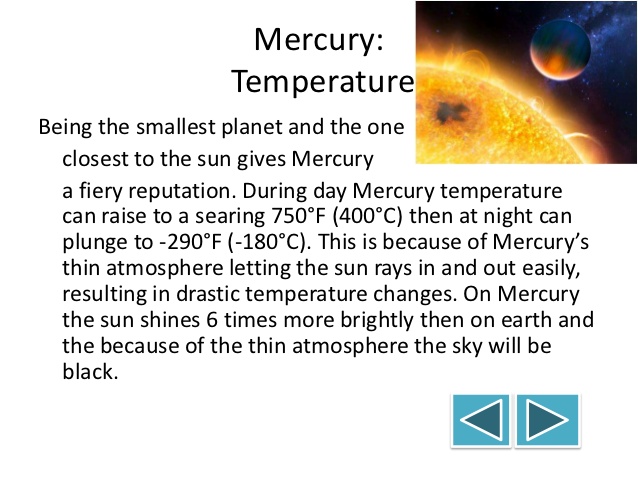Welcome to Learn to Astronomy! In this article, we will be exploring the fascinating world of Mercury’s daytime temperatures. Discover how this closest planet to the Sun reaches scorching temperatures due to its proximity and lack of atmosphere. Join us as we delve into the extreme conditions of this innermost planet in our solar system.
The Scorching Daytime Temperature of Mercury: Unveiling the Planet’s Extreme Hotness
Mercury, the closest planet to the Sun, is known for its extreme temperatures. With a scorching daytime temperature that can reach up to a blistering 800 degrees Fahrenheit (430 degrees Celsius), it holds the title for the hottest planet in our solar system. This astonishing fact sheds light on the planet’s proximity to the Sun, making it subject to intense heat and radiation. Understanding the extreme hotness of Mercury is crucial in unraveling the mysteries of this small, rocky planet.
The unrelenting heat on Mercury arises from various factors. Firstly, its distance from the Sun plays a significant role. Being only about 36 million miles (58 million kilometers) away, Mercury experiences an immense amount of solar radiation. As a result, its surface absorbs and retains a substantial portion of the Sun’s energy. This phenomenon leads to a tremendous rise in temperature during the daytime. Mercury’s close proximity to the Sun contributes to its extreme daytime heat.
Secondly, the lack of a substantial atmosphere exacerbates Mercury’s temperature extremes. Unlike Earth, which has a thick atmosphere that traps heat and regulates temperature, Mercury’s atmosphere is extremely thin. It consists mainly of particles released by the planet’s surface, such as vaporized metals. This tenuous atmosphere offers little protection against the Sun’s intense radiation, allowing the surface to heat up rapidly. The absence of a substantial atmosphere exacerbates the extreme daytime temperature of Mercury.
Furthermore, Mercury’s slow rotation speed also has an impact on its temperature extremes. Unlike Earth’s 24-hour day, Mercury completes a full rotation in about 59 Earth days. This slow rotation causes drastic temperature variations between the planet’s scorching daytime and freezing nighttime. On the side directly facing the Sun, exposed to its relentless rays, the temperature soars. However, on the side facing away from the Sun, the lack of sunlight causes temperatures to plummet to -290 degrees Fahrenheit (-180 degrees Celsius). Mercury’s slow rotation speed results in extreme temperature differences between its daytime and nighttime.
Studying Mercury’s extreme hotness provides invaluable insights into the dynamics of planetary atmospheres and the effects of solar radiation. It highlights the intricate interplay between a planet’s proximity to its star, the presence or absence of an atmosphere, and rotation speed. As astronomers continue to explore and unravel the secrets of our solar system, Mercury’s extreme daytime temperature serves as a reminder of the fascinating and diverse conditions that exist in the cosmos.
Scientists Discover Planets More Habitable Than Earth
[arve url=”https://www.youtube.com/embed/CJUVd8SguDw”/]
Universe Size Comparison 3D
[arve url=”https://www.youtube.com/embed/i93Z7zljQ7I”/]
Frequent questions
What is the average daytime temperature on Mercury?
The average daytime temperature on Mercury is around 800 degrees Fahrenheit (430 degrees Celsius). This extreme temperature is due to the planet’s proximity to the Sun and its lack of atmosphere to regulate temperatures. However, it is important to note that temperatures can vary significantly depending on the location and time of day on Mercury.
How hot does it get on the surface of Mercury during the day?
On the surface of Mercury, temperatures during the day can reach **up to 800 degrees Fahrenheit (430 degrees Celsius)**.
What are the extreme temperature variations on Mercury throughout a day?
Mercury, being the closest planet to the Sun, experiences extreme temperature variations throughout a day. During the daytime, when Mercury is facing the Sun, the surface temperature can rise as high as 800 degrees Fahrenheit (430 degrees Celsius). This scorching heat is due to the planet’s proximity to the Sun and its lack of a substantial atmosphere to regulate the temperature.
However, during the nighttime, when Mercury is on the side facing away from the Sun, temperatures can plummet drastically. The lack of atmosphere means that there is no heat retention, causing the surface temperature to drop to as low as -290 degrees Fahrenheit (-180 degrees Celsius) or even lower.
The extreme temperature variations on Mercury are a result of its close proximity to the Sun and its lack of a significant atmosphere to distribute or retain heat. These conditions make Mercury’s surface one of the most inhospitable environments in the solar system.
In conclusion, the temperature of Mercury during the day is a scorching hot 800 degrees Fahrenheit (430 degrees Celsius). This is mainly due to its close proximity to the Sun, causing intense heat to be trapped on its surface. With such extreme temperatures, it becomes evident why Mercury is considered the hottest planet in our solar system. However, it’s important to note that these temperatures can vary depending on the specific location and time of day on the planet. Further studies and observations continue to shed light on the fascinating nature of this enigmatic planet and its extreme thermal conditions.

